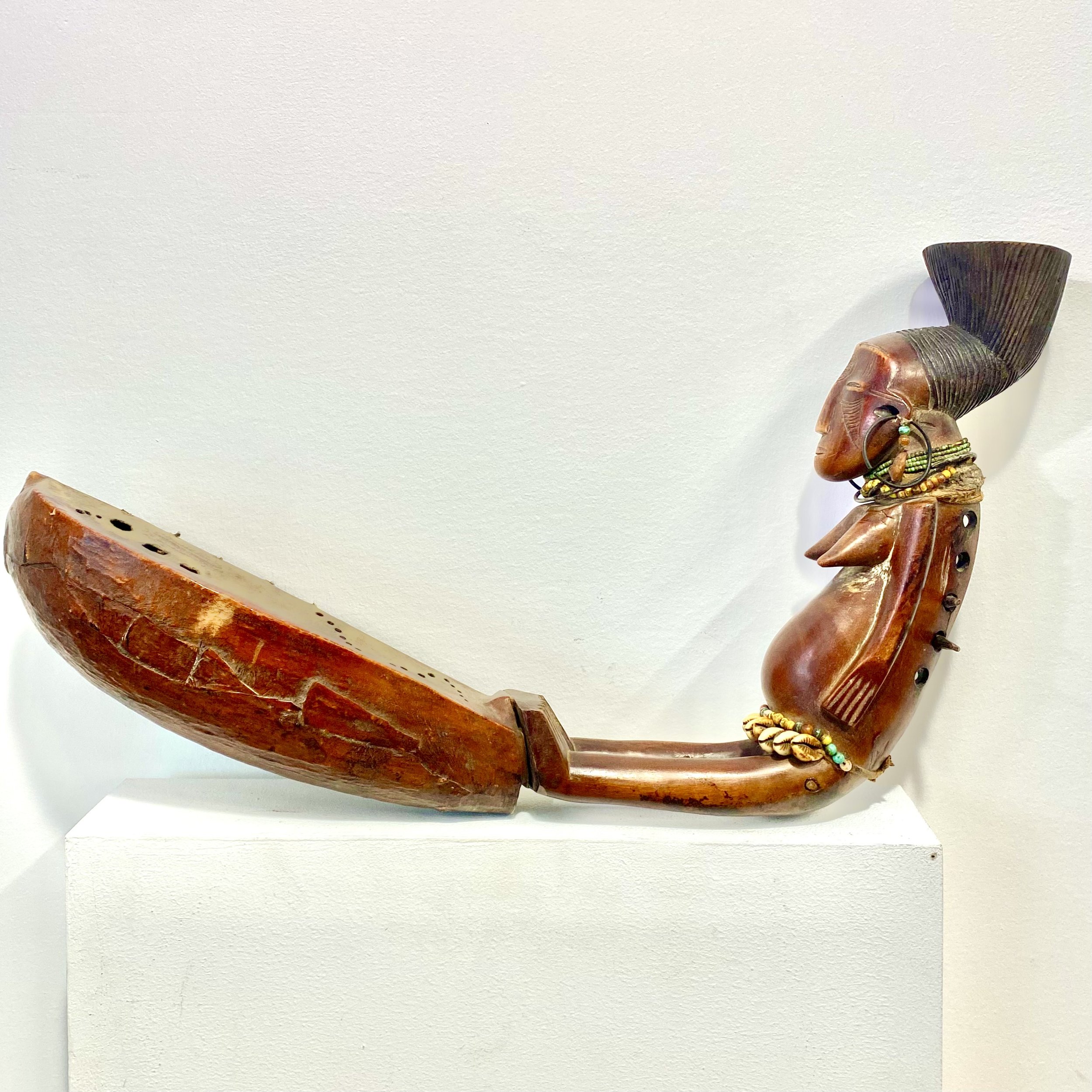 Image 1 of 10
Image 1 of 10

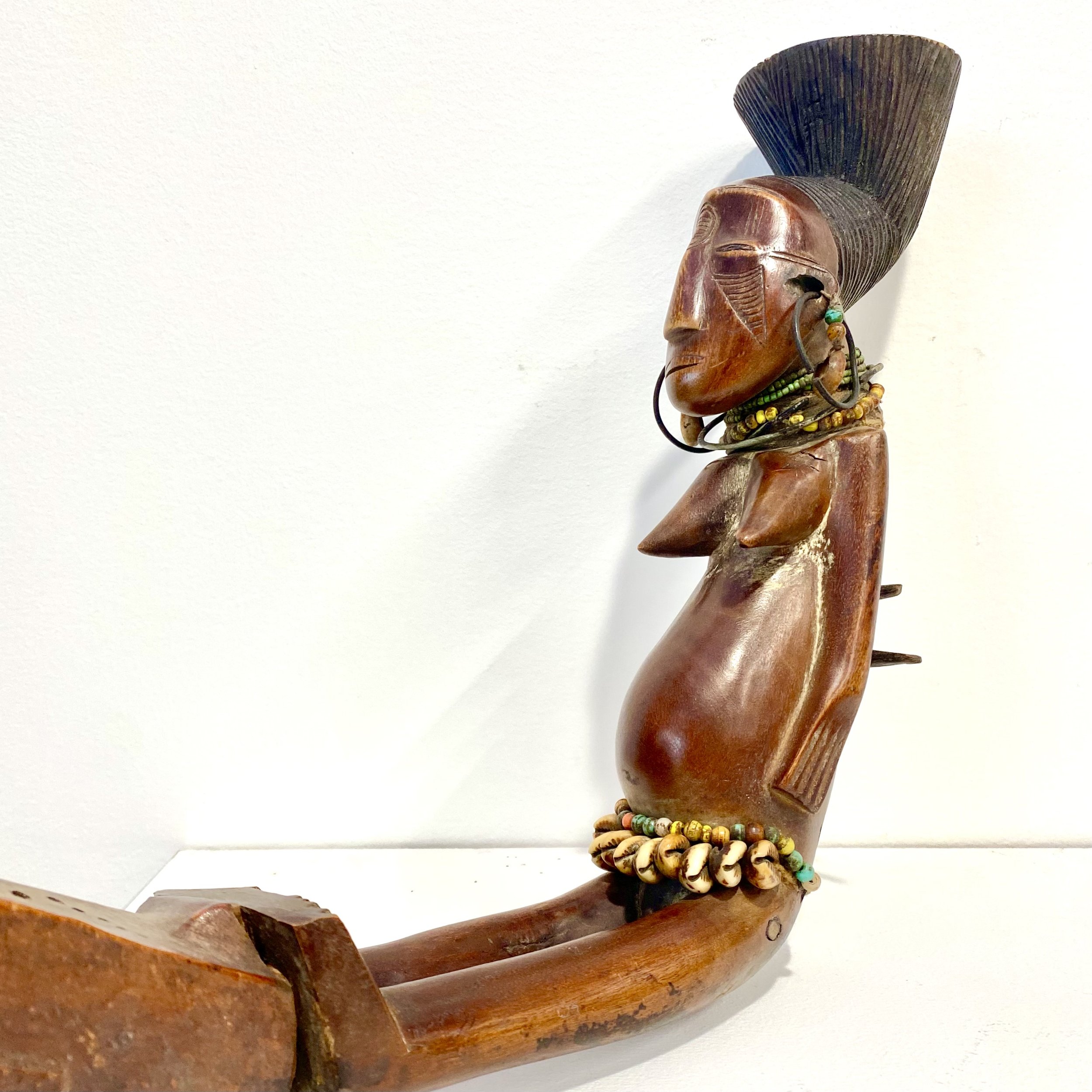 Image 2 of 10
Image 2 of 10

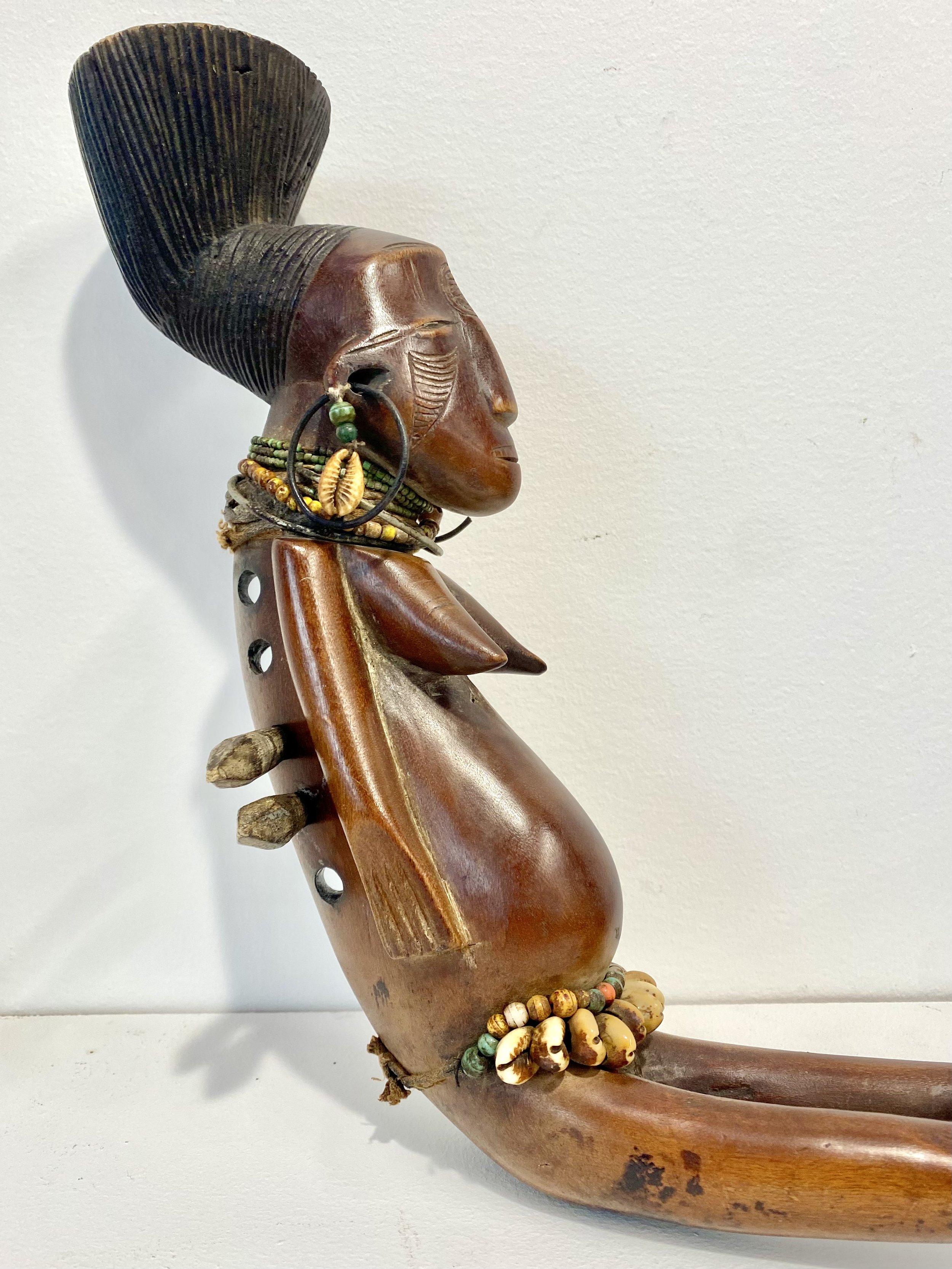 Image 3 of 10
Image 3 of 10

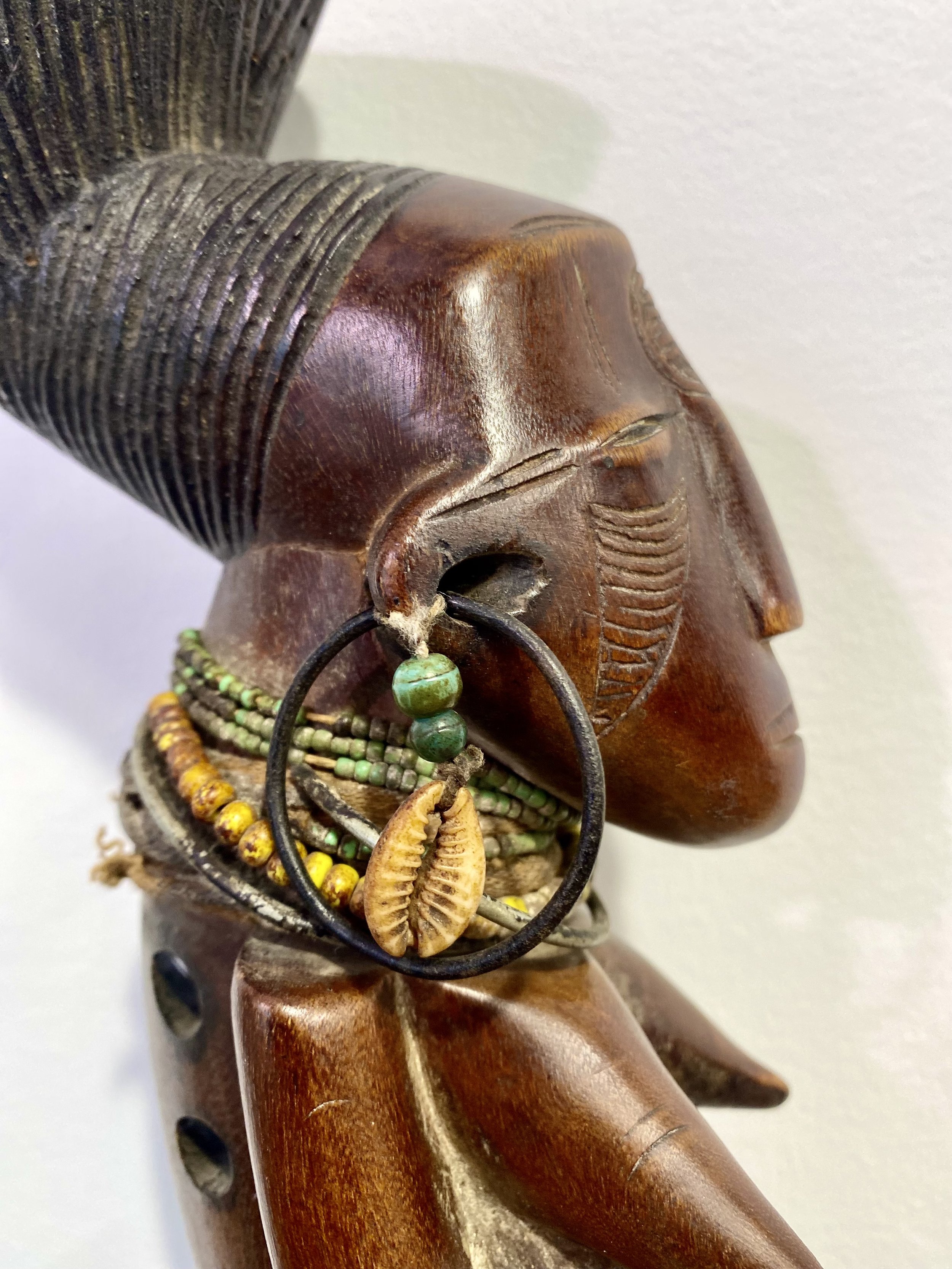 Image 4 of 10
Image 4 of 10

 Image 5 of 10
Image 5 of 10

 Image 6 of 10
Image 6 of 10

 Image 7 of 10
Image 7 of 10

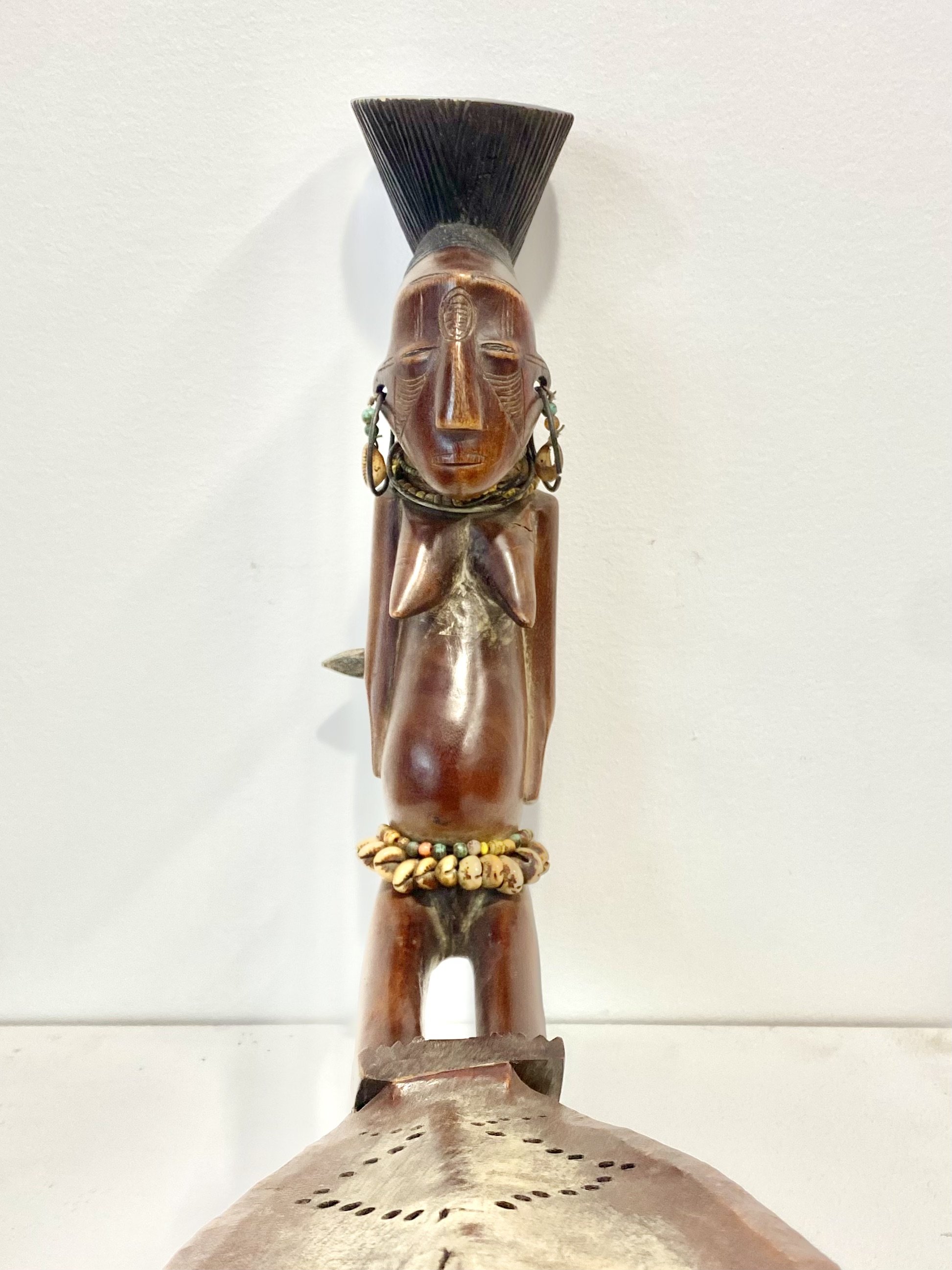 Image 8 of 10
Image 8 of 10

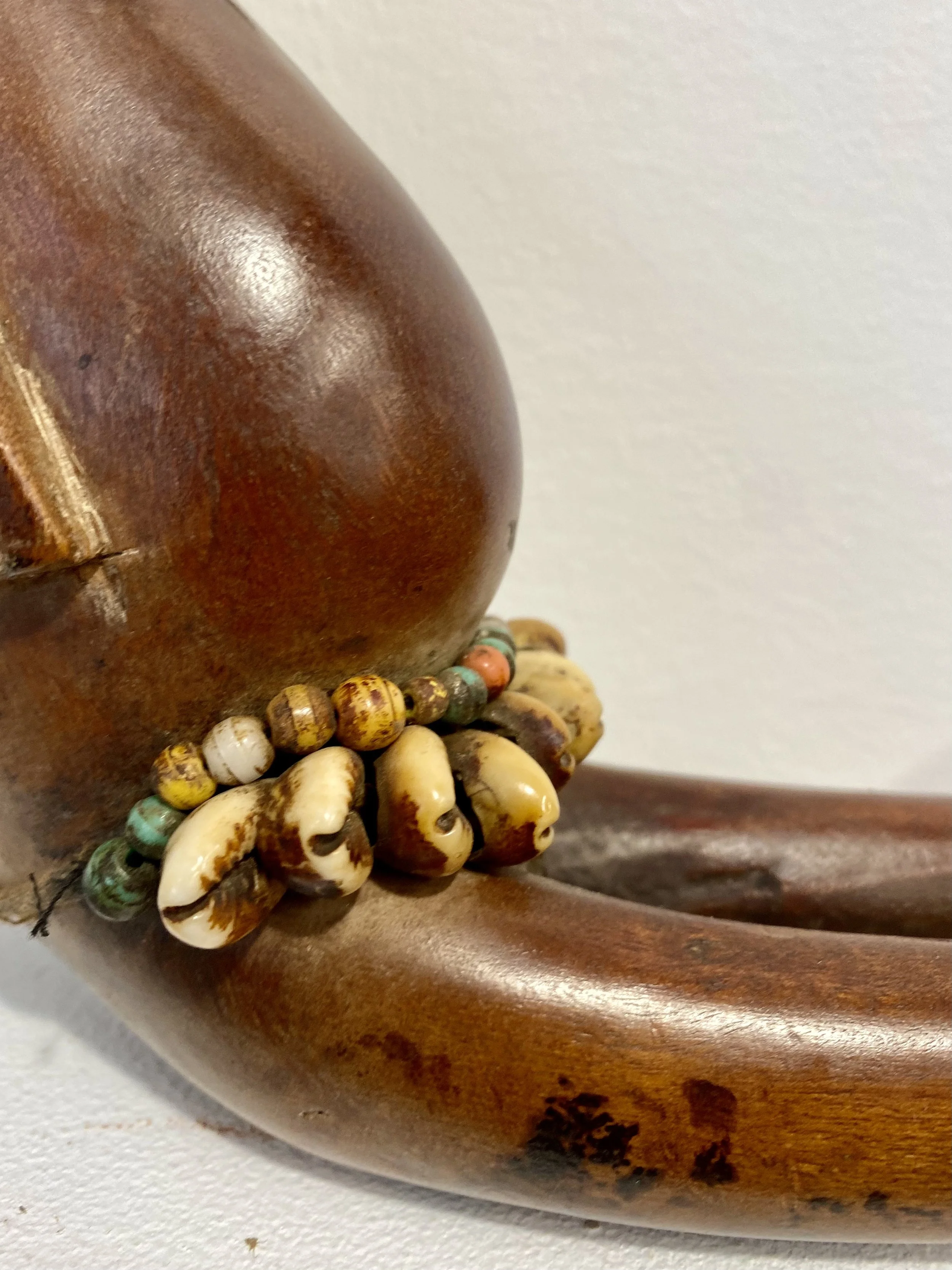 Image 9 of 10
Image 9 of 10

 Image 10 of 10
Image 10 of 10











Mangbetu Domu Harp
Mangbetu Domu (five-stringed, bowed harp). Early- to mid-20th century. Haut-Uélé province, Democratic Republic of Congo.
The Mangbetu people hail from the far northeastern corner of the DRC. They migrated to this area from adjacent South Sudan around 1000 CE, and prospered among the local Bantu tribes, due in part to their skill in forging metals. Mangbetu culture reached is apogee in mid- to late-19th century, just prior to the colonial period. Court artisans crafted lavish decorative and utilitarian objects, including furniture, musical instruments, and weapons, typically incorporating figurative elements. The heads of these figures are unusually elongated, reflecting the Mangbetu custom of limpombo, in which children's heads were tighly wrapped to cause an elongation of the skull. Additionally, the figures may display the elaborately-woven, funnel-shaped coiffures preferred by Mangbetu ladies (see historical images).
Mangbetu harps first appeared in the 19th century, and continued to be made until the political upheavals of the 20th century disrupted the traditional culture. They take a variety of forms. The resonators may be hourglass-shaped, or oval (like this one), and were covered with a variety of different animal skins, from okapi to lizard. Older harps usually have figurative heads, some of which may be portraits of individual court figures. Later harps (such as this) work a full figure into the neck. Over the years, these instruments became less about the sound they produced, and more about their visual effect as sculpture.
This figure is decorated with brass hoops and cowrie earrings, necklaces of glass beads, and frayed loops of woven cord. There is also a cache-sexe of tiny cowries. Two of five wooden pegs are present. Overall, there is a rich patina from handling, and great character!
19" long x 16" high x 5" wide.
Mangbetu Domu (five-stringed, bowed harp). Early- to mid-20th century. Haut-Uélé province, Democratic Republic of Congo.
The Mangbetu people hail from the far northeastern corner of the DRC. They migrated to this area from adjacent South Sudan around 1000 CE, and prospered among the local Bantu tribes, due in part to their skill in forging metals. Mangbetu culture reached is apogee in mid- to late-19th century, just prior to the colonial period. Court artisans crafted lavish decorative and utilitarian objects, including furniture, musical instruments, and weapons, typically incorporating figurative elements. The heads of these figures are unusually elongated, reflecting the Mangbetu custom of limpombo, in which children's heads were tighly wrapped to cause an elongation of the skull. Additionally, the figures may display the elaborately-woven, funnel-shaped coiffures preferred by Mangbetu ladies (see historical images).
Mangbetu harps first appeared in the 19th century, and continued to be made until the political upheavals of the 20th century disrupted the traditional culture. They take a variety of forms. The resonators may be hourglass-shaped, or oval (like this one), and were covered with a variety of different animal skins, from okapi to lizard. Older harps usually have figurative heads, some of which may be portraits of individual court figures. Later harps (such as this) work a full figure into the neck. Over the years, these instruments became less about the sound they produced, and more about their visual effect as sculpture.
This figure is decorated with brass hoops and cowrie earrings, necklaces of glass beads, and frayed loops of woven cord. There is also a cache-sexe of tiny cowries. Two of five wooden pegs are present. Overall, there is a rich patina from handling, and great character!
19" long x 16" high x 5" wide.